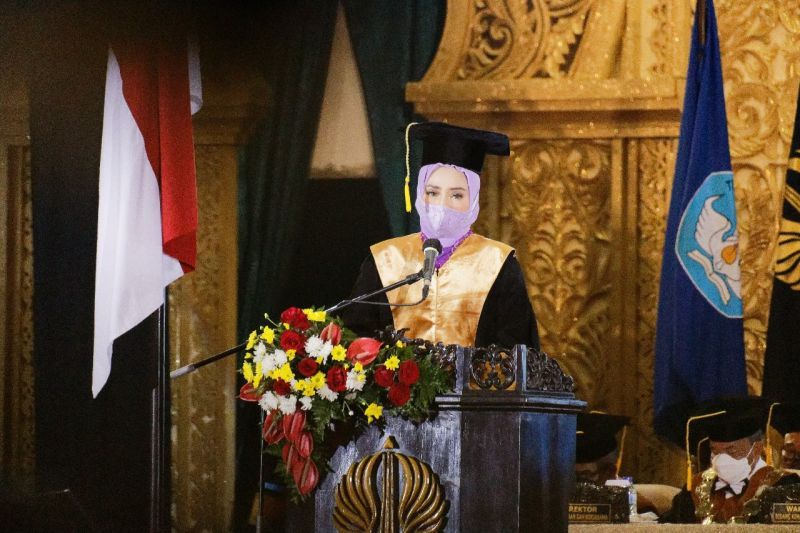
www.unesa.ac.id
Unesa.ac.id, SURABAYA-The water crisis is becoming a serious threat and must be a common concern. In the Technocratic Draft of the 2020-2024 National Medium-Term Development Plan issued by the Ministry of National Development Planning or Bappenas, water scarcity in Java, Bali and Nusa Tenggara is estimated to increase. Also, water quality will continue to decline drastically. The Meteorology, Climatology and Geophysics Agency (BMKG) has warned of the impact of climate change on the availability of clean water in Indonesia.
According to UNESA's Professor of Environmental Sanitation Engineering, Prof. Dr. Erina Rahmadyanti, M.T., the scarcity of water is a serious threat to human survival. Therefore, it should be the attention of all circles. World Water Day, March 22, 2022, must be a momentum to foster mutual awareness in viewing, utilizing and responding to water availability.
Moreover, this year's commemoration of World Water Day carries the theme "Groundwater, Making the Unseen Become Visible" which indirectly invites to protect groundwater from overexploitation. "This is a serious threat and is of concern to the world," he said.
Impact of the Water Crisis
The governor who was inaugurated late last year added that water scarcity has increased along with deforestation, concretization, pollution and global warming. As a result, one third of all schools in the world do not have access to clean water and adequate sanitation. Half of the hospitals are filled with diseases spread by water or poor sanitation.
Two thirds of the world's population lives with polluted water conditions. 1.8 billion people experience water scarcity. In fact, every 90 seconds a child dies due to diarrhea and the number is estimated to increase from year to year where one tenth of people do not have access to clean water.
"In 2015, of the 564 rivers that became 6 percent of the world's clean water potential, around 58 percent were polluted," he explained.
According to Bappenas data, he continued, 31 percent of child deaths in Indonesia are caused by diarrhea and waterborne diseases. As many as 80 million people in Indonesia do not have access to clean water. So how to deal with water scarcity in Java and Indonesia in general?
Solutions to Overcome Crisis
According to him, there are several ways that can be done, including constructed wetlands (CW) or artificial wetlands as green infrastructure, which can be implemented for water availability by harvesting rainwater and treating wastewater directly in place. CW is a cheap and easy way to maintain the availability of water in Indonesia in a sustainable manner.
"This issue is a research that I did and conveyed in the professor's inauguration speech last December," he explained.
In addition, other efforts are also needed, namely good governance of industrial areas and green areas and forests. This is also related to regulation and its application in the field. Then at the lower level also need public awareness in utilizing water.
A culture of saving water, from household to industrial scale as part of efforts to balance the water supply balance, is very much needed. "Happy World Water Day 2022, I hope that we are part of those who love and are aware of a healthy and clean environment, including caring about the availability of clean water," said the Governor of the Faculty of Engineering. [UNESA PR]
Share It On:






